2012 Mitsubishi I Review
It seems that these days, we can’t get enough of electric vehicles, or at least talking about them. With the current environmental craze in overdrive, any discussion relating to zero emissions is worthy of inclusion.
FAST FACTS
| 1. The i’s electric motor is rated at the equivalent of 66-hp and 145-lb-ft of torque. |
| 2. Charge times differ, with 22 hours on a conventional household outlet, 7 hours on a 240-volt outlet and an impressive 30 minutes for an 80 percent charge with a special quick-charger. |
| 3. The Lithium-ion battery pack contains 88 individual cells and boasts an 8-year, 100,000 mile warranty. |
| 4. A De Dion three-link rear suspension helps deliver surprisingly good cornering ability. Plus, it’s rear-wheel drive. |
| 5. Pricing starts at $29,125 and with a $7,500 Federal Tax Credit it drops to $21,625 |
Automakers, beset by increasing government meddling as it relates to emissions and fuel economy requirements, are looking at various ways to meet the challenges ahead. And certainly, when it comes to urban environments and shorter distance driving, EVs are seen as a logical choice.
At present, there are two ‘mainstream’ electric vehicles on sale in North America, the pure electric Nissan Leaf and the extended range Chevy Volt, which uses a gas engine to boost range beyond 40 miles.
The third, which is on sale about the time you read this, is the 2012 Mitsubishi i electric vehicle, a car that, like the Leaf represents another effort at all-electric propulsion. Although new to our shores, the i or i-MiEV (Mitsubishi innovative Electric Vehicle) as its known in other markets, has been buzzing around Europe and Japan for some 18 months now, though the version across the pond is slightly different.
To begin with, it’s narrower. In order to better appeal to American tastes (and sizes), our model is some 4.3-inches wider. That said, in most other aspects it’s quite alternative by small car standards. The conventional 660 cc gas engined Japanese Domestic Market K-class i mini car, on which this is based, bucks the trend in featuring a motor mounted amidships under the rear seat, driving the back tires.
INSIDE: MORE SPACIOUS, MORE NORMAL THAN YOU’D THINK
This gives it rather excellent space efficiency, so when the time came for the Diamond-Star boffins to install the electric synchronous permanent magnet motor and lithium-ion battery pack for the MiEV variant, it went under the seat and interior floor respectively.
One thing that strikes you about the i Electric Vehicle, is that despite looking like an oversized golf buggy on the outside, it’s very much conventional. There’s a normal looking dash with a speedometer, plus even the battery charge display is laid out like a conventional fuel gauge. There’s also a normal looking console and automatic style shifter between the seats, no fancy buttons or toggles here.
However, what does strike you is that the cut-price origins of the original i are very much evident. There’s plenty of hard scratchy plastic and the seats feel thin and not particularly supportive. That said, there’s room to fit four North American adults with few issues, while cargo space swells to an impressive 55.5 cubic feet with the rear seat folded (it’s 13.2 with the 50/50 split bench in the up position), all the more impressive considering the North American i is less than 145-inches long and 62.4-inches across the beam.
FUN TO DRIVE, YES REALLY
Electric cars don’t tend to inspire much enthusiasm among real auto aficionados, though given that this is a Mitsubishi and its rear-wheel drive, the i is actually quite fun. A low center of gravity mean that it feels quite stable, more than most small cars, especially through the corners and the steering is quite responsive by current electric assist standards.
Thanks to the electric synchronous permanent magnet motor, maximum torque (145 lb-ft, which coincidently is double that of the gas engined i), comes in the second you step on the throttle, which means whether driving in town or on the open road, the electric i is rather punchy. In fact, we didn’t find any problems overtaking vehicles at all, including a Saab/Subaru convoy that really didn’t like being passed. When driving on open roads and highways, it’s quite easy to forget you’re actually driving an electric car. It’s quite comfortable to put along at highway speeds, though maximum velocity is pegged at 81 mph.
In terms of operating modes, the i has three different ones, regular drive mode, ‘Eco’ and ‘Brake.’ The latter two are designed to conserve energy and maximize the car’s range, which is approximately 68 miles per single charge in real world driving (based on EPA tests).
What is interesting, is that in brake mode (best used for stop and go city driving where the car’s regenerative braking system works most effectively), it didn’t feel like the car was dragging a tree behind it.
CHARCHING OPTIONS
In terms of charging the thing, Mitsubishi provides three different options, two with outlets located on the right side of the vehicle, one on the left. The first is a 120-volt outlet (that includes a portable charging cable that comes with the car), which is designed to be plugged in at home. Using this method the i takes around 22 hours to fully charge. The second option, a 240-volt EVSE outlet, can restore battery capacity in some seven hours. On the left side is an optional DC quick charging receptacle, which can restore approximately 80 percent battery capacity in just 30 minutes, though at present such charging stations are few and far between.
In addition, Mitsubishi doesn’t recommend using the DC quick charging method too often as it can drastically shorten the life of the battery pack (it’s currently rated to last eight years).
CAN’T ESCAPE RANGE ANXIETY
One thing we did note when driving the i is that range anxiety remains very much a problem, even on the West Coast. It becomes particularly apparent if the battery pack is half depleted or more. During our test loop, which took in some Freeway driving and steep hills, it took less than 18 miles for the battery pack to become depleted from half charge, so when planning a journey you need to seriously bear in mind the route you’re taking as well as the location of charging stations. According to the EPA, the i EV boasts an equivalent miles per gallon rating of 126 in the city and 99 on the open road.
AN AFFORDABLY-PRICED EV?
In terms of pricing, Mitsubishi has strived to make the i reasonably competitive in the U.S. The entry-level ES model (which includes such features as keyless entry, 6-way adjustable driver and 4-way adjustable front passenger seats, power windows and 100-watt audio system), is pegged at $29,125; but add in the $7500 Federal Tax Credit and this drops to $21,625. The SE model, which adds an 8-speaker 360 watt stereo, 15-inch alloy wheels, two-tone interior accents, leather wrapped steering wheel, better quality seats and standard front foglamps among other things, stickers at a fairly tall $31,125, though throw in that federal tax credit and this drops to $23,625.
However, to really get the most out of the i you need to add the quick charger, which also requires ordering the $2,790 Premium Package that includes a navigation system with rear back up camera, FUSE Hands Free Link communication system with a USB port, plus steering wheel mounted audio controls. Throw in the $150 Cold Zone Package, which includes a warming jacket for the lithium-ion battery pack and heated side mirrors (essentially required in Northern states) and the price of the i SE model, including credits, stands at $26,565 before taxes, but after rebate.
THE VERDICT
Despite ‘needing’ the Premium package, to make it a viable proposition, the i is currently the lowest priced EV on the market in North America. That said, before you can consider purchasing one, Mitsubishi requires potential buyers to have their homes assessed to see if the wiring can handle charging the car (the cost of the survey and any home wiring upgrades is on the buyer’s shoulders). That, coupled with range anxiety, means that despite its fun to drive qualities and surprisingly good interior room, the i is still very much a car for the early adopter set.
Related Reading
2011 Nissan Leaf Review
2011 Chevrolet Volt Review
2009 Toyota Prius Review
2012 Honda Civic Hybrid Review
2012 Toyota Prius v Review
LOVE IT
- Acceleration
- Handling
- Interior space
LEAVE IT
- Fit and finish
- Range anxiety
- Buying and operating can be difficult
More by Huw Evans
















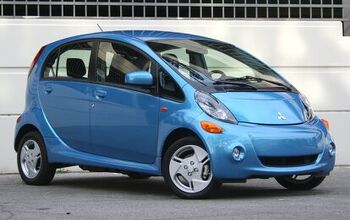

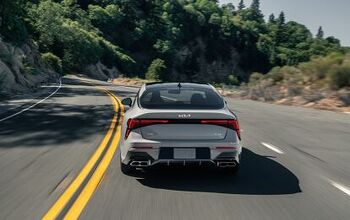



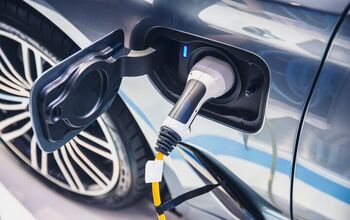
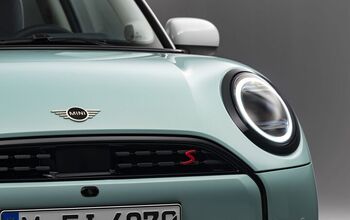

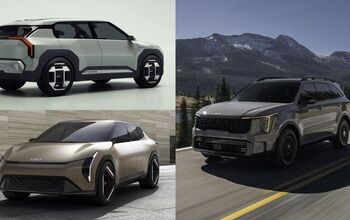


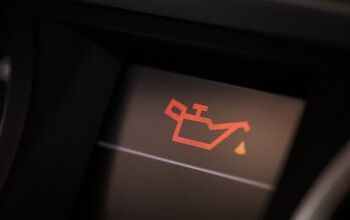
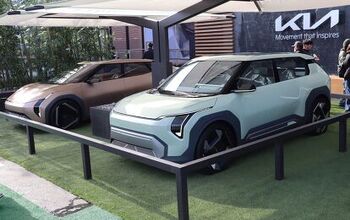

Comments
Join the conversation
what a joke this car is suited for europe or japan , many canadians drive over 100 kms ONE way to go to work and in winter that batereis range is cut down to almost half range, how can you use this car in sakatoon when its -30 5 monthes out of the year??? heres some advice buy a 1996 chevy metro for 1000 bucks make sure its a 3 cylinder 5 speed transmision you will get 45- 50 mpg US !! and NO CAR PAYMENTS or "RANGE ANXIETY"
It's really sad that cars aren't really getting that much better fuel mileage than 15 years ago. My 98 VW golf was getting 15 km/L or almost 35mpg average. Older car less to insure as well. If I factor in the price of vehicles versus their fuel mileage, does it make sense to buy a volt at 50mpg $35,000 here in Canada or a hyundai at 30mpg for $22,000 with todays gas prices at $1.30 a liter? Usually a car will last a good 10 years. Let's see ... the price difference is $13,000. If I average 30,000 km per year, at 30mpg about 12 km/L. That works out to 2500L, at $1.30 per litre. That's $3250 per year in gas (in the meantime our volt at 50 mpg or 21 km/L has spent 1428L or $1857 per year. A difference of 3250-1857= $1393. At $1.30 fuel prices (also excluding maintenance costs as electric fuel cell batteries are quite expensive) the $13,000 price difference divided by the fuel cost difference gives us 9 years just to break even at the pumps. So maybe it is worth while, however I didn't factor in maintenance costs which may favor our combustion engine over the electric fuel hybrid. Nor did I factor insurance costs. Now start increasing fuel costs which are surely to rise in the future and electric gas vehicles start to become a viable choice. Now if the world was to completely run out of fuel, maybe 50, 100 or 200 years from now which is completely possible then we will have to revisit our problem. However I won't be around then so it will be up to our grandchildren or even children to figure this out. I'll leave it up to them. Conclusion: If you have a long commute the volt might make sense, if you live close to work (10-30km) any gas car at a good price is the better choice. Work it out yourself. Have fun!